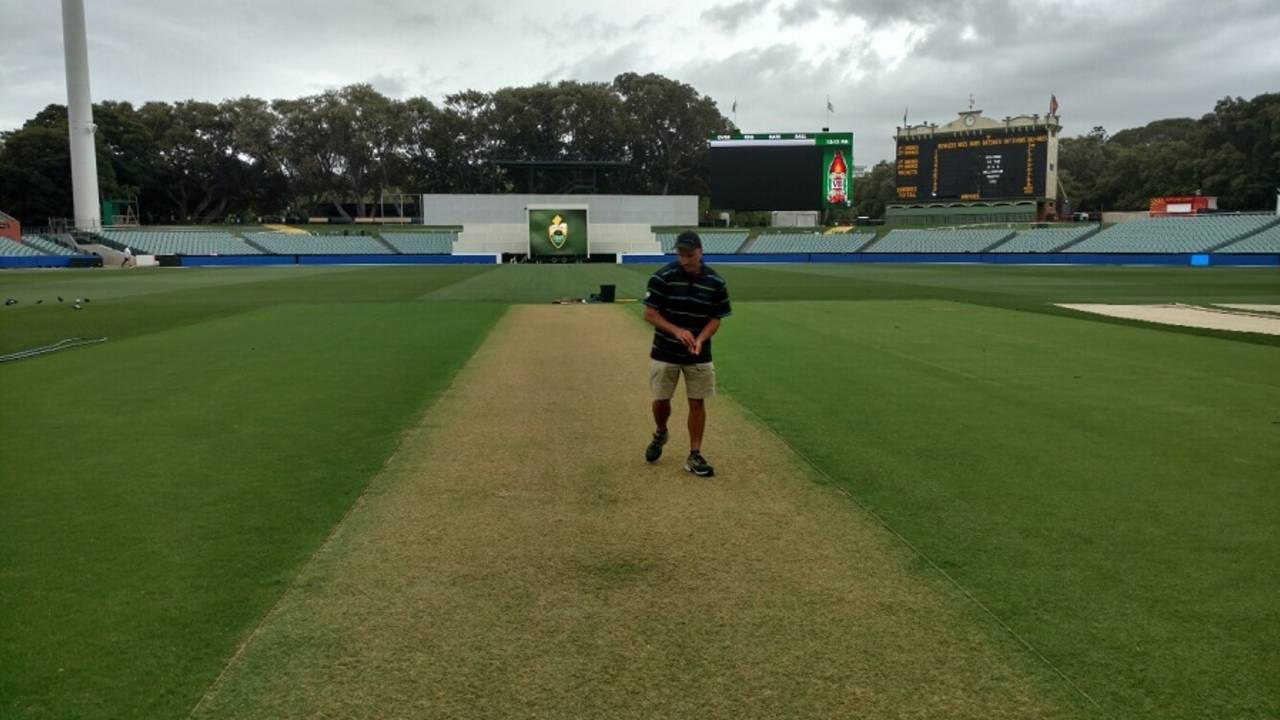Adelaide Oval's carefully prepared day/night Test pitch has been tweaked as a result of last summer's day three finish to offer less to bowlers - two millimetres less to be precise.
The height of the grass on the surface was a major talking point in the aftermath of the inaugural floodlit Test, with Australia's captain Steven Smith and his New Zealand counterpart Brendon McCullum both reasoning the experimental pink ball would be no worse off for more extensive use of the lawn mower.
What would change, though, was the amount of seam movement on offer to the bowlers. Batsmen, administrators, broadcasters and sponsors would all prefer a match that lasts until the fourth evening at least, meaning the seamers who prospered last year will likely be the chief parties disappointed by the curator Damian Hough's latest creation.
"Preparation-wise still leaving a bit of grass on it," he said. "We're bringing the starting height down and the finished height will be down another 2mm from last year.
"In review of last year, which was a good learning experience, leaving the grass on it assisted the quicks a little bit more. We were really happy with the game but feel a couple millimetres less will hopefully still keep it a good contest between bat and ball - that's what we're after.
"It mightn't nip around quite as much. You still think it will hoop around a bit at night with the ball but we thought maybe we'll get that balance a bit better."
Hough's work with Adelaide's drop-in surfaces has evolved considerably since they were first installed for the summer of 2013-14. The surface then was prepared to be dry after the fashion of Adelaide's original square, but a lack of the desired deterioration pushed Hough to take a different approach in which thatchy grass coverage could assist both pacemen and spinners throughout a match.
"Our game plan with leaving the grass on is to leave a coarse thatchy grass, the ball will bite into for the quicks it should also do the same for the spinner," Hough said. "We've ben doing that for two years now and the feedback has been the spinners have still been able to get purchase out of that grass and get a bit of turn.
"The grass we leave on it, we're not going to get a lot of breaking up. We haven't had that for 3-4 years. We're going down that path, don't get that natural deterioration so we'll get the grass to assist the ball biting in and moving around a little bit."
While Hough has been lauded about his work with drop-in surfaces, he admitted there was still much unknown about them, for wickets can take years of use to mature in their characteristics.
"It's still new. Is it the drop-in pitch that's preventing the pitch from deteriorating or is it a brand new wicket area and brand new soil that needs time to mature? Who knows," he said. "We've got different pitches that we've remade, or rebuilt some drop-in pitches with a different grass variety that is opening up. We'll keep working on it and keep assessing it and adjusting as we see fit.
"Where we're at now, we're really comfortable with the feedback from all the visiting players, coaches at Shield level has been really positive. We're trying to produce a pitch with a really good contest from bat and ball."
Daniel Brettig is an assistant editor at ESPNcricinfo. @danbrettig
